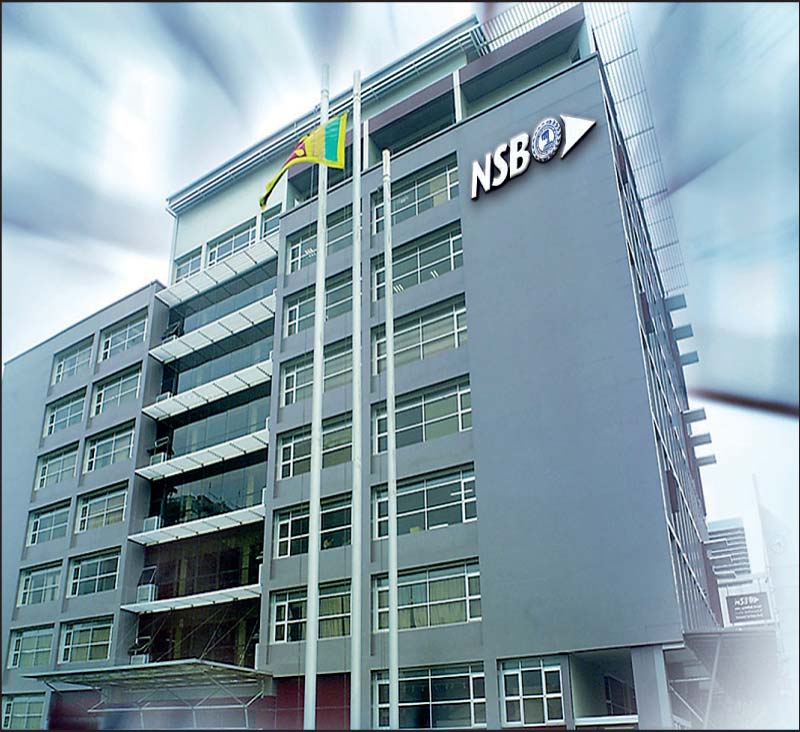Sunday Dec 14, 2025
Sunday Dec 14, 2025
Wednesday, 16 March 2022 03:20 - - {{hitsCtrl.values.hits}}

 By H.M. Hennayake Bandara
By H.M. Hennayake Bandara
National Savings Bank (NSB) was established 50 years ago and opened for business on 16 March 1972 with the objective of promoting savings among the people of Sri Lanka, particularly among those with limited means, and the profitable investment of savings so mobilised. Since then, National Savings Bank has flourished into one of Sri Lanka’s premier savings banks instrumental in promoting the habit of saving and thrift among people and thus paving the way for individuals’ as well as the country’s development.
Today, marking the 50th milestone of its journey with the people of the country, NSB stands tall among the banking giants with Rs. 1.58 trillion asset base and Rs. 1.43 trillion deposit base. It is important to celebrate each and every milestone of this journey with the people of the country, for whose sake NSB was established and who remain loyal to the bank to date.
A brief history
The very first “savings bank” was an informal organisation started in the year 1810 by Henry Duncan, a parish priest, among the poor inhabitants of a small village in the remote district of Dumfriesshire in Northern Scotland. Its purpose was to assist the people who were affected by bad times and lean crops.
By 1832, the Concept of Saving had reached Sri Lanka, which was then a remote Crown Colony on the expanding edge of the British Empire and resultantly, on 6 August that year, the Ceylon Savings Bank was born. Sir Robert Wilmot Horton, the Governor of Ceylon (1831-1837) pioneered the establishment of the Ceylon Savings Bank. It was a private bank, whose Committee of Management consisted of prominent Colombo residents, government and mercantile officials. The bank was opened only three days a week and accounts were kept in Sterling Pounds until 1872. The bank had only one office in Colombo and provincial deposits were accepted at government district administration offices or kachcheries.
In 1880, a Legislative Council member, Sir Ponnambalam Ramanathan made his case for a more efficient and customer-conscious institution that would allow easy access for deposits and withdrawals through the network of national post offices and accordingly, in 1885, the Post Office Savings Bank was established and for the first time in the nation’s history a true bank for the ‘little man’ was opened for business in the name of Ceylon Post Office Savings Bank.
In 1941, the Post Office Savings Bank was reconstituted under a new ordinance, by the terms of which, the management of the bank was entrusted to a Board of Trustees comprising the Permanent Secretary to the Ministry of Post, the Deputy Secretary to the Treasury and the Postmaster General. The last two officials remain the members of the Board of Directors of NSB to-date.
In September 1938, the Savings Certificate Section of the Postmaster General’s Department was established and since then several series of savings certificates were issued up to the establishment of NSB in 1972.
In 1942, the Ceylon War Savings Movement was set up as a separate entity to enhance the contributions of the British colony of Ceylon for the immense cost of prosecuting the Second World War. Although it helped to raise money for war loans and popularised the acceptance of savings certificates, its main function was to encourage the public to save with Ceylon Savings Bank and Post Office Savings Bank. After the war, it was renamed as the National Savings Movement.
The founder of the bank
Sri Lanka was a very different country 50 years ago, when NSB was founded. Most people dwelt in rural areas, pursuing traditional occupations, and with simple lifestyles. Roads, railways, and other national infrastructure were limited, mostly left over from the colonial era. Few people had access to modern financial services; it was mainly the rich and middle-class townsfolk who had personal bank accounts. Much of the country’s productive capacity was foreign owned. There was no television and only one radio station existed. Even the name of the country was different; it was known to the world as Ceylon. Yet even in those long-gone days, the founders of NSB cherished a vision for the future.
Dr. N.M. Perera, the then Minister of Finance, in his maiden budget speech presented on 25 October 1970 said that the reorganisation of savings institutions has been a long-felt need in Ceylon and proposed to create a new institutional framework in the form of a National Savings Bank within which, new ideas can be nurtured for the maximum mobilisation of the savings of the community for financing economic development. The new bank will provide variety in the savings facilities offered to the public, so that the preferences of different classes of depositors, particularly those in the rural sector, could be effectively exploited.
Establishment of National Savings Bank
The year 1972 marked a turning point in the history of savings banking with the birth of the National Savings Bank by an Act of Parliament, the Act No. 30 of 1971, as a fully owned state banking organisation, bringing the Ceylon Savings Bank, the Post Office Savings Bank, the National Savings Movement and the Savings Certificates Section of the PMG’s Department together under one roof. As the successor to pioneer savings institutions, the National Savings Bank became the inheritor of a rich and ancient tradition of savings banking in Sri Lanka. The bank’s institutional framework has created credibility among the common man to deposit their money under the assurance that it is in safe hands, while giving them an opportunity to participate in the development of the economy.
The NSB Act was amended subsequently by the Amendment Act No. 08 of 1982, No. 28 of 1995 and No. 22 of 1999. NSB was authorised and granted the status of a licensed specialised bank by the Monetary Board of the Central Bank of Sri Lanka with the approval of the Minister of Finance in terms of the Section 76 (A) of the Banking Act No. 30 of 1988 as amended by Banking (Amendment) Act No. 33 of 1995 to carry out the business as specified in the provisions of the National Savings Bank Act.
Having started with two branches in 1972, the bank witnessed a physical growth of its reach to an island-wide network of 100 branches, by the time it celebrated its Silver Jubilee in 1997 and today, the bank boasts of an island-wide network of 261 branches in addition to other service areas such as ATMs, CRMs, POS and Online Banking facilities, etc. It was a privilege for me to steer this great organisation and add 72 branches to the network of the bank during my four years tenure as the General Manager/Chief Executive Officer. More importantly, after 38 years of its operations, a branch was opened in Yatiyantota on 8 December 2010, the electorate of Dr. N.M. Perera, which was a historic occasion and as a tribute, we unveiled a portrait of him in the branch. It is significant that the 200th branch was opened in Medawachchiya on 30 November 2011.
50 years of operations
Today, the banking sector encompasses 24 Licensed Commercial Banks and 6 Licensed Specialised Banks. The total asset base of the banking sector was Rs. 14.7 trillion (end-2020), and NSB stands as the 4th largest bank as well as the largest and safest Specialised Bank in the country and is the only such institution backed by 100% explicit Government guarantee. By fostering the savings habit, the bank promotes personal wealth creation and as a financial intermediary of national scale, it channels savings into investment for the development of the country’s economy.
NSB is the second largest holder of Government Securities and one of the largest lenders to the Government’s long-term infrastructure and socio-economic development projects. As one of the biggest lenders in the housing market in the country, the bank facilitates the growth in national home ownership, operating a pathway towards economic security and mobility for the customers.
When we look back over the last 50 years, the bank has been resilient in its march towards excellence and has grown as a well-recognised banking institution. During the period of 50 years, there had been several phases of transformation that helped the bank to achieve its current status; the amendment of NSB Act in 1995 being the main breakthrough the bank needed to forge ahead, and with this timely development, the bank adopted a move market-oriented approach.
Throughout the past five decades the bank has been awarded and recognised repeatedly at numerous local and international forums. So, its achievements are many and while we take pride in them, it is important to remember those who worked tirelessly to make those achievements a reality and take the bank to the position it holds today. The greatest honour that we can bestow upon them is lifting the bank to a much higher level than where it stands today.
NSB celebrates its 50th anniversary in a new social and economic environment, both local and global. This new environment has brought many challenges to all, including business models such as NSB. Therefore, NSB needs to make its 50th anniversary another turning point in confronting such challenges successfully.
I wish the Golden Jubilee celebration of NSB to be a great success.
(The writer is former General Manager/CEO of NSB, and Past President of Association of Professional Bankers Sri Lanka.)